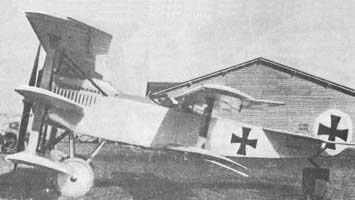DFS-228
DFS-228
высотный разведчик
В 1940 DFS (Deutsches Forschungsinstitut für Segelflug) или Немецкий Научно-исследовательский институт Планеров начинает честолюбивую программу с целью достижения сверхзвуковой скорости. Так как единственными достаточно мощными и доступными в то время были ракетные двигатели, то решение состояло в том, чтобы преодолеть звуковой барьер на большой высоте. Было решено разделить программу на три этапа:
Первая часть заключалась в создании и испытании герметической кабины, метода спасения пилота в случае аварии и испытания работы ракетных двигателей на больших высотах.
Вторая часть должна была исследовать работу различных конфигураций крыла прямой стреловидности. DFS приобретает проекты Heinkel P.1068, которые имели различные углы стреловидности крыла.
Треть и последняя часть заключалась в постройке сверхзвукового самолета на основе результатов первых 2-х этапов. Таким самолетом должен был стать DFS 346.
В целях выполнения первого этапа DFS решил проектировать новый самолет (хотя многое было изучено в более раннем проекте, DFS 54). Фактически он представлял собой ракетный планер, способный набирать очень большую высоту с помощью ракетного двигателя и далее планировать на большие расстояния. В 1941 Технический департамент (RLM), присвоил этой модели номер 228, и потребовал, чтобы DFS 228 помимо исследовательской программы был предназначен и для высотных разведывательных полетов.
Хотя работы были начаты сразу, более важные задания заставили отложить проект до 1943 г, когда он был возобновлен по приказу RLM.
Спроектированный DFS 228 должен был доставляться или буксироваться на высоту 10000 м, на которой он запускался или отцеплялся от буксировщика. Далее включался двигатель и набиралась высота до 23000 м. После этого ракетный двигатель использовался лишь периодически для серии последовательных наборов высоты после планирования. При этом максимальная высота поддерживалась в течении 45 мин полета. После выработки топлива планер совершал длительный полет, ведя разведку с помощью инфракрасных фотокамер. Ко времени снижения до высоты 12000 м, он должен был пролететь около 750 км. Еще 300 км планер мог пролететь с высоты 12000 м, хотя эта дистанция увеличивалась при использовании восходящих потоков.
В конструкции DFS 228 максимально использовалось дерево. Простой полумонококовый фюзеляж состоял из трех секций: герметичной кабины, центральной и хвостовой. Среднерасположенное крыло с поперечным "V" - 4,5° имело деревянный лонжерон, идущий вдоль всего размаха. Нервюры деревянные, обшивка фанерная. Обтянутые тканью элероны занимали половину размаха крыла и состояли из двух секций. Внутренняя использовалась также в качестве закрылка при посадке. Сверху и снизу крыла были также установлены интерцепторы.













